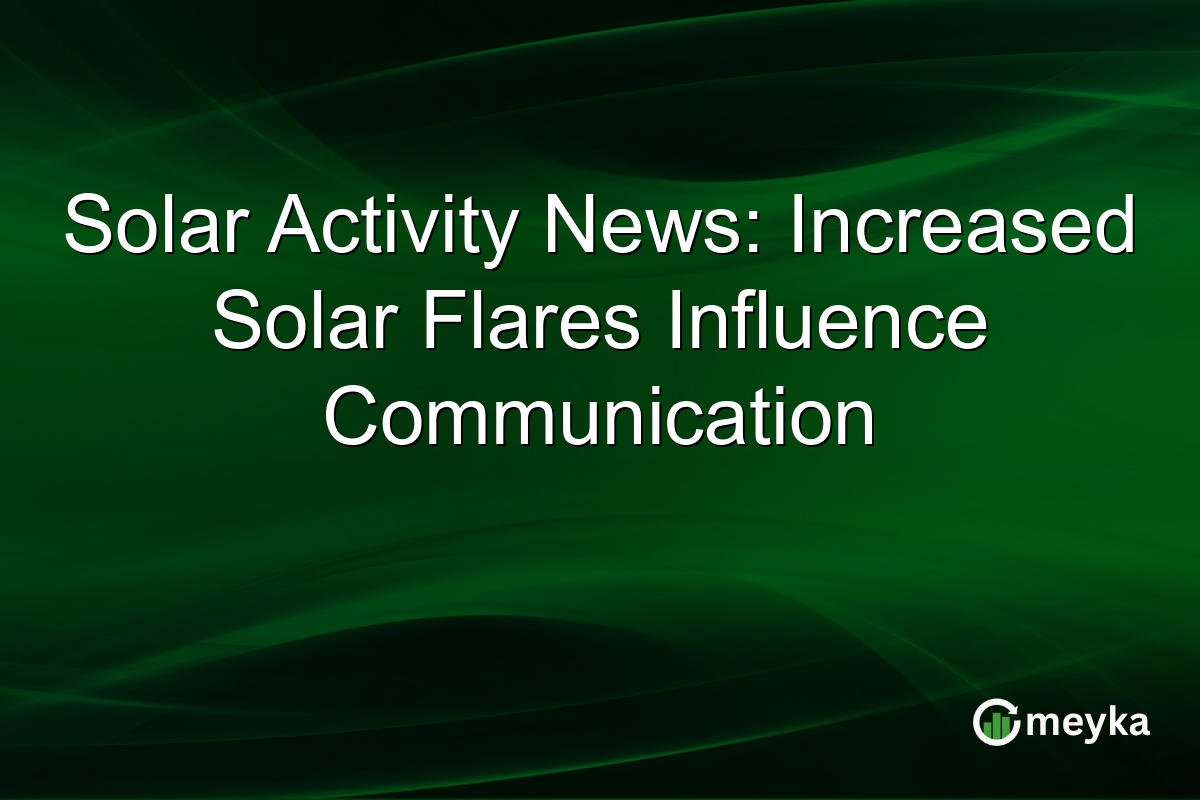Solar Activity News: Increased Solar Flares Influence Communication
The Sun’s recent burst of activity, marked by an M-class solar flare, is drawing attention to the impact of solar flares on communication networks. As solar activity in 2025 increases, industries dependent on satellite communications are vigilantly assessing their vulnerabilities. Understanding these effects is crucial as we rely more on advanced communication technologies.
Understanding Solar Flare Impact
Solar flares are powerful bursts of radiation. When an M-class solar flare occurs, like the one recently observed, it can cause minor radio blackouts. These blackouts disrupt communication networks vital for global operations. The impact might seem small but affects airlines, emergency services, and military operations relying on real-time communication channels.
Interestingly, solar activity in 2025 is on the rise, making it essential for sectors to monitor these patterns closely. The increase in solar activity corresponds with increased reliance on satellite technologies, making this issue more pressing.
For continuous updates, check the solar flare news on EarthSky.
Legal and Regulatory Implications
As communication networks face disruption, legal and regulatory considerations become critical. Governments are under pressure to ensure infrastructure resilience. The Federal Communications Commission (FCC) and other global regulatory bodies are focusing on enhancing guidelines for affected industries.
Policies might need updates to ensure compliance with new standards focused on solar flare impact mitigation. This includes mandating more robust fail-safes in communication technology and potentially broadening disaster recovery planning.
Ultimately, aligning policies with evolving technology trends ensures that communication systems remain stable and secure.
Industry and Market Reactions
Industries heavily dependent on communication systems are on alert due to rising solar flare activity. Companies in telecommunications, broadcasting, and aviation are particularly affected. They are reassessing their systems to bolster defenses against disruptions from solar flares.
Market sentiment is increasingly cautious, with investors considering the potential risks in their portfolios. Companies are investing in technology aimed at mitigating these risks, indicating a shift towards more resilient infrastructure.
For investors, staying informed about solar flare impacts is crucial to guide strategic decisions.
Future Outlook for Solar Activity
Looking ahead, we expect solar activity in 2025 to continue posing challenges. As reliance on satellite communication grows, industries must adapt quickly. Enhancing system robustness and developing innovative solutions will be key.
Collaboration with scientific communities, like NASA, can drive advancements in predictive modeling. Understanding solar cycles can help better prepare industries for adverse impacts.
This proactive approach ensures continuity and stability in communication networks, balancing the dual challenges of technological dependence and natural phenomena.
Final Thoughts
In conclusion, increased solar activity in 2025, particularly from M-class solar flares, poses tangible risks to communication networks globally. Industries and governments must address these challenges through updated legal frameworks and technological investments. Emphasizing resiliency and compliance, along with cross-industry collaboration, will mitigate these impacts effectively. As this trend continues, staying informed and adaptable will be essential for maintaining uninterrupted communication capabilities.
FAQs
An M-class solar flare is a medium-sized flare. It’s significant enough to cause minor radio blackouts affecting communication networks. These flares can influence satellite operations and GPS systems.
Solar flares emit radiation that can disrupt satellite communications, leading to radio blackouts. Networks reliant on satellites, like aviation and military communications, are particularly susceptible to such impacts.
Regulatory bodies like the FCC are enhancing standards and guidelines. They focus on ensuring that communication systems incorporate fail-safes against disruptions caused by solar flares. Updating policies for resilience is a priority.
Disclaimer:
The content shared by Meyka AI PTY LTD is solely for research and informational purposes. Meyka is not a financial advisory service, and the information provided should not be considered investment or trading advice.






